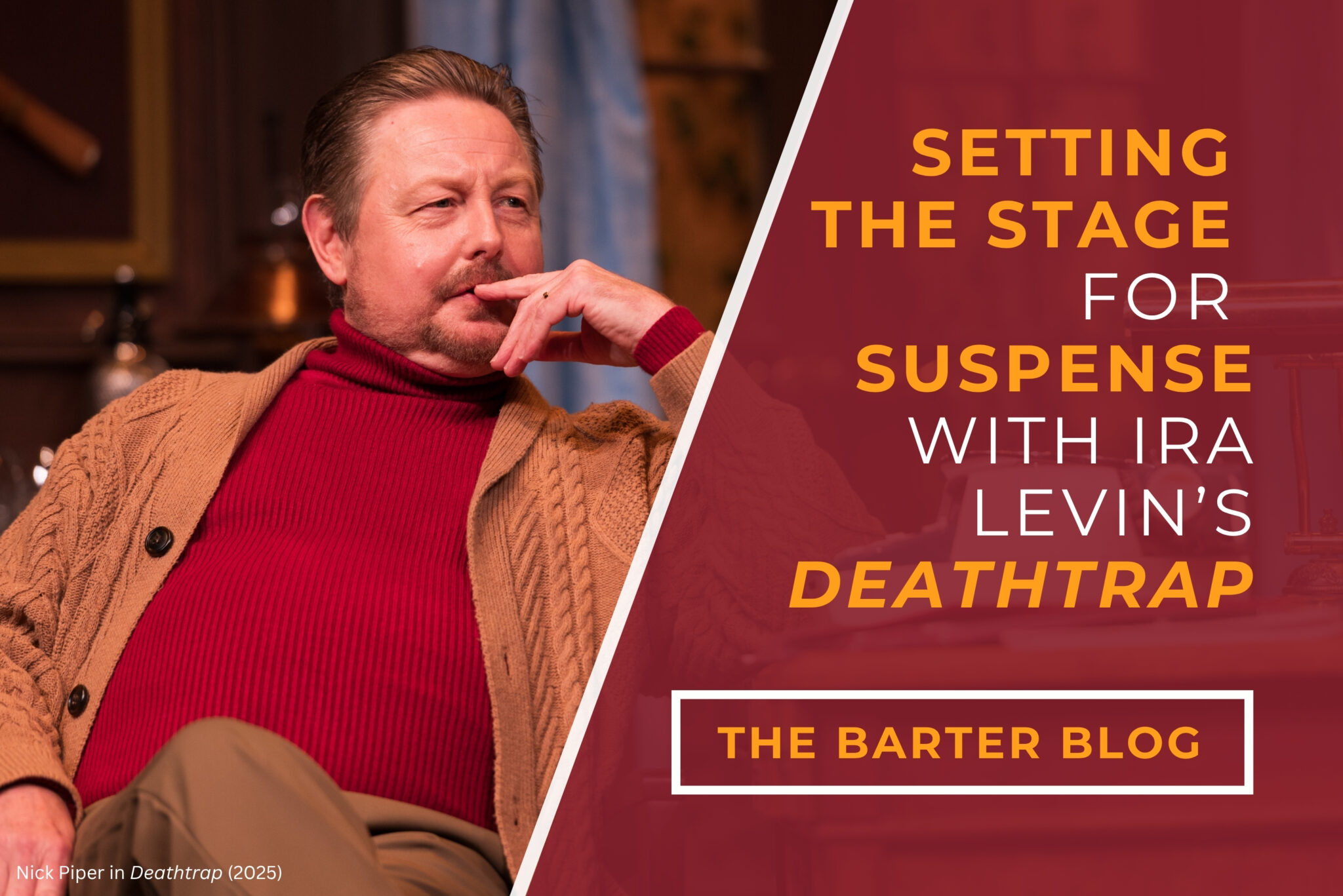
By D’Arcy Morrell –
Barter Theatre’s latest production doesn’t waste time letting you know the stakes. The beautifully designed country cottage looks ordinary enough—a cozy fireplace, a desk stacked with papers—but a second glance tells another story. A revolver gleams above the mantel. A crossbow hangs menacingly on the wall. In Ira Levin’s Deathtrap, the suspense is born not from what leaps out at us, but from what waits quietly in plain sight.
Thrillers have long thrived on the stage. Shakespeare filled candlelit theatres with daggers and bloody conspiracies. Later came the drawing-room mysteries of Agatha Christie, where polite conversation masked betrayal and murder. When Deathtrap premiered in 1978, it carried those traditions forward and twisted them. Levin’s play became Broadway’s longest-running comedy-thriller, a blend of razor-sharp wit, sudden violence, and reversals that kept audiences guessing. Now, nearly five decades later, it still has the power to shock.
Set in the Connecticut home of playwright Sidney Bruhl, Deathtrap begins with the makings of a quiet study, but beneath that calm surface waits a story about ambition and survival. What begins as a case of writer’s block quickly twists into something far more sinister, as the line between imagination and reality begins to blur.
“It’s about understanding Sidney’s situation and what he wants,” said Nick Piper, who plays the once-famous playwright at the center of the story. “He hasn’t had a hit in 18 years, and he’s at a point in his life and career where he’ll do anything to be relevant again.” That hunger, Nick explained, makes Sidney both magnetic and terrifying. “He’ll do anything to protect his own skin, so he has to be on his toes at every moment.”
Suspense in the theatre requires a different kind of craftsmanship than on screen. No sharp cuts, no dramatic close-ups; only silence, timing, and the charged space between actor and audience. “The playwright gives you these great moments of release before surprising you with a shock,” Nick said. “We spent a lot of time working on building tension, and we’re so excited to get in front of an audience.”
That immediacy is magnified at Barter, where no detail escapes notice; a flicker of doubt across Sidney’s face or the weight of a pause can tilt the entire room. Each gasp is shared, each nervous laugh ripples through the crowd and back onto the stage. It’s a reminder that thrillers thrive on complicity: the actors set the trap, but the audience springs it.
And then there are the props. In Deathtrap, nearly every object on stage carries the threat of violence. Knives, maces, and revolvers aren’t just background dressing, they’re characters in their own right. Each one has to look convincing enough to make an audience’s pulse spike, while still being safe for actors to handle night after night. That balance of menace and practicality is part of the production’s design challenge, and part of the fun.
For Nick, those objects are also a window into Sidney’s mind. “He considers himself an expert on death,” he said. “He’s made a career writing murder mysteries, and now he’s put himself in the middle of one.” The irony, of course, is that even an expert can’t outwit death.
Like every great thriller, Deathtrap saves its sharpest turn for the end. Nick won’t spoil the ending, but he will offer a hint: “He’s so wrapped up in himself and his cleverness that he has a blind spot.”
That blind spot is where the play strikes hardest, proving that what feels ordinary can turn deadly in an instant. At Barter, the danger doesn’t stay contained on stage. It waits, it tightens, and when the lights fall, you’re the one caught in the trap.
Barter Theatre’s production of Deathtrap runs until November 1st on Barter’s Gilliam Stage.

